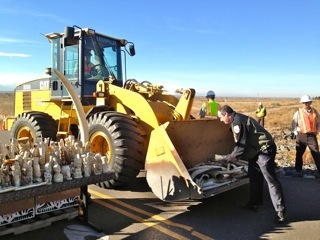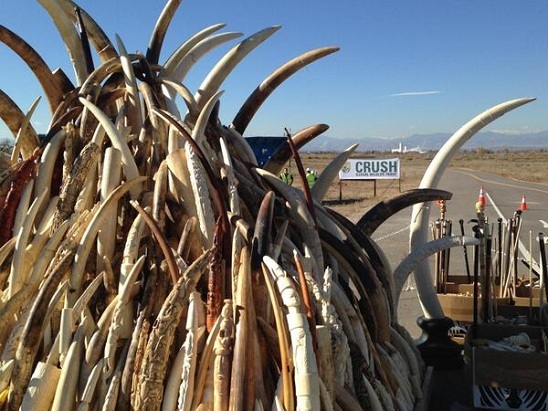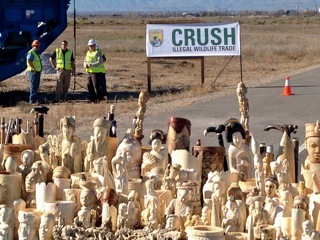The Hard Life of Celebrity Elephants
To Venkitachalam, the solution to the harm inflicted on and by elephants is self-evident: their captivity should be banned — or at the very least, elephants should no longer be used in festivals. Tradition or not, they’re wild animals that belong in the forest. But Raman Sukumar, the founder of the Asian Nature Conservation Foundation and perhaps the world’s leading expert on Asian elephants, says it isn’t that simple. Asian elephants have been on the endangered-species list since 1986, yet contrary to trends nearly everywhere else in the world, the wild-elephant population in southern India has actually been increasing over the past several decades, with elephants now living in places where they hadn’t been spotted for hundreds of years. The trouble with this is that deforestation and booming human populations have shrunk and fragmented their habitats, which means elephants are increasingly coming into conflict with humans — raiding crops, running amok in forest villages. Thirty years ago, Sukumar told me, wild elephants killed around 150 people a year across India. Today it’s closer to 500. When wild elephants exceed the capacity of their habitats, the only alternative to capturing them is culling them, which is to say, shooting them dead.
What about continuing to allow elephant ownership but banning their use in festivals? “They’d probably be in a worse situation than they are now,” Sukumar said. Without festivals, their income disappears, and their owners might not be able to afford their care. And the festivals may have another benefit. “It’s important that people think that elephants are sacred,” he said. If people associate an elephant with Lord Ganesha, they’re much less likely to kill it if it ravages their crops or to poach it for ivory. The only two countries in the world where wild-elephant populations are rebounding, he noted, are India and Sri Lanka, both places where the elephant has a religious role.
Sukumar meant none of this as endorsement of the status quo. The current approach, he stressed, is unacceptable. There needs to be a large-scale educational campaign and a total overhaul of how captive elephants are captured, trained and cared for, he said.
Venkitachalam felt sure that such a program could never happen as long as Kumar was forest minister. And then, on April 1, Kumar wasn’t forest minister. In the end, he stepped down not because of Venkitachalam’s complaints or his father’s demands, but after his wife filed domestic-abuse charges against him (which he disputed).
Two weeks after Kumar resigned, the Forest Department put into effect a new set of festival rules, banning the parading of elephants throughout the hottest hours of the day and allowing no more than three elephants at a time within a temple’s walls. The next time I saw Venkitachalam, he smiled as if the revolution had come. There were still several weeks of festivals left, including Thrissur Pooram, the biggest elephant event of the year, and he was sure that these rules would make a big difference.
Four days after the rules became official, I went to a festival in Kadungalloor to watch as a veterinarian named Abraham Tharakan checked the elephants before they were paraded. There were 10 in all — 9 for the parade, plus 1 spare — and Tharakan gave them a perfunctory exam; he was mostly checking for signs of musth, a hormonal condition that sexually mature males go through for two or three months a year. Even the gentlest elephants are liable to become volatile and unpredictable during musth; if they’re in it, they’re forbidden to work. Tharakan told me that all these elephants checked out fine.
A few minutes later, we were in the temple’s office as he reviewed the elephants’ documents with a temple official. They must have forgotten that my translator was there, because Tharakan told the official that one of the elephants, named Pampady Rajan, was “not all that O.K.” — there was swelling around his temporal glands, he told them, which is one of the telltale symptoms of the onset of musth. But when I asked Tharakan again if he’d seen any problem, he insisted he hadn’t and denied that he’d said otherwise. Even as we spoke, Pampady Rajan was parading, despite the fact that there was a replacement elephant on hand. (He’s very tall, so they were probably reluctant to lose him.) And all nine elephants were lined up inside the temple walls, despite the new rule that allowed only three, and were crammed so close together that they were leaning into each other, despite another rule that requires that they be separated by at least five yards. An official from the Kerala Festival Coordination Committee was there, and I asked him why they hadn’t followed the new law. He seemed taken aback. “It’s a general recommendation,” he said. “Not a hard-and-fast rule.”
The next day was the day before Thrissur Pooram, and I stood on the vast parade grounds that make up the center of the city, where 300,000 people would gather to watch the biggest elephant pageant of the year. I was talking to an insurance agent and a former elephant owner named C. A. Menon about the elephant craze. “If you have a good car, a Cadillac, nobody cares,” he said. “But when an elephant goes to festivals, people say, ‘Who is the owner?’ ” Menon is both a proud festival promoter and a close ally of Venkitachalam. It’s an odd combination but really just reflects how many people in Kerala feel about the elephants: conflicted.
I asked Menon if the new rules would affect the Pooram. It was supposedly forbidden now to parade elephants between 11 a.m. and 3:30 p.m., when the tropical sun is most punishing, and Thrissur Pooram always uses elephants during those hours. He said that the government had stepped in to make a last-minute exception. “Next year also there will be complaints,” he said. “But then, too, they will say, ‘Only this year.’ And on like that.”
“So they’ll make an exception every year,” I said.
Menon let out a tremendous laugh. “Every year — like that,” he agreed. “How can you stop this spectacle?”
~Rollo Romig
New York Times
August 14, 2013
Go make a difference!







+copy+2.JPG)
+copy.JPG)
.JPG)













